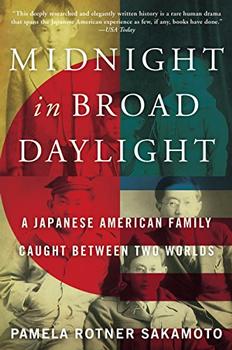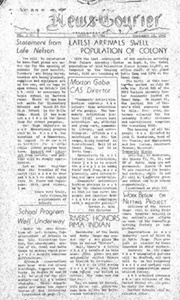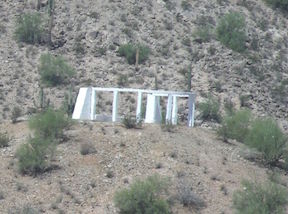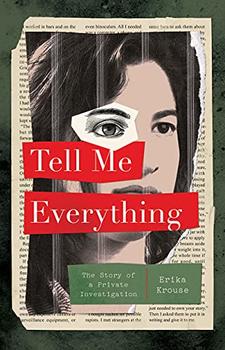Summary | Excerpt | Reviews | Beyond the Book | Read-Alikes | Genres & Themes | Author Bio

A Japanese American Family Caught Between Two Worlds
by Pamela Rotner SakamotoThis article relates to Midnight in Broad Daylight
 In Midnight in Broad Daylight: A Japanese American Family Caught Between Two Worlds, Harry Fukuhara, his sister Mary, and his niece Jeanie were forced into internment camps built to house people of Japanese descent who were living in the United States during World War II. Over 127,000 Japanese Americans, mostly from the West Coast where anti-Japanese sentiment ran highest, were sent to the camps.
In Midnight in Broad Daylight: A Japanese American Family Caught Between Two Worlds, Harry Fukuhara, his sister Mary, and his niece Jeanie were forced into internment camps built to house people of Japanese descent who were living in the United States during World War II. Over 127,000 Japanese Americans, mostly from the West Coast where anti-Japanese sentiment ran highest, were sent to the camps.
Life in the internment camps was difficult, and little privacy existed. People had to use communal showers, toilets, and laundries. While libraries were available, Japanese language books, except for dictionaries, were not allowed. Even under these trying conditions, internees published their own newspapers. The two papers the Fukuharas would have read were the Tulare News and the Gila News-Courier. Tulare Center in California was an assembly location where internees were held before being relocated to one of the camps, so the Tulare News was only published from May 6 to August 19, 1942. Because Gila was a camp, the Gila News-Courier ran for longer, from January 1, 1943 until September 5, 1945.
 According to the Densho Encyclopedia website, the newspapers gave camp life the appearance of normalcy. However, while the internees were allowed to practice their First Amendment right of free speech, their papers were carefully monitored. The website states: "Despite its 'democratic' appearance, the press behind barbed wire could not be literally 'free' or 'normal'."
According to the Densho Encyclopedia website, the newspapers gave camp life the appearance of normalcy. However, while the internees were allowed to practice their First Amendment right of free speech, their papers were carefully monitored. The website states: "Despite its 'democratic' appearance, the press behind barbed wire could not be literally 'free' or 'normal'."
Although the newspapers printed routine camp announcements and government notices, they also published stories about a variety of topics, including sports, literature, religion, school events, and social events. The Gila News-Courier also addressed some of the darker issues of life in the internment camps. It reported on inadequacies, gambling, assaults, and drinking. One of the most galvanizing articles was published in the December 5, 1942 edition. The piece gave details about the attack on Community Activities Section supervisor Takeo Tada who had been seriously beaten by five other inmates - a low moment at the camp.
 When the camps closed, so did the newspapers. The final installments of the Gila camp paper mirrored the final encampment days for its readers, mostly featuring information about relocations and opportunities outside of the camps.
When the camps closed, so did the newspapers. The final installments of the Gila camp paper mirrored the final encampment days for its readers, mostly featuring information about relocations and opportunities outside of the camps.
Ruins of the Gila River Japanese Relocation Internment Camp, courtesy of wikipedia
Page of the Gila News-Courier, courtesy of encyclopedia.densho.org
Gila River Internment Camp Memorial, courtesy of wikipedia
Filed under Places, Cultures & Identities
![]() This "beyond the book article" relates to Midnight in Broad Daylight. It originally ran in February 2016 and has been updated for the
January 2017 paperback edition.
Go to magazine.
This "beyond the book article" relates to Midnight in Broad Daylight. It originally ran in February 2016 and has been updated for the
January 2017 paperback edition.
Go to magazine.




The secret of freedom lies in educating people, whereas the secret of tyranny is in keeping them ignorant
Click Here to find out who said this, as well as discovering other famous literary quotes!
Your guide toexceptional books
BookBrowse seeks out and recommends the best in contemporary fiction and nonfiction—books that not only engage and entertain but also deepen our understanding of ourselves and the world around us.